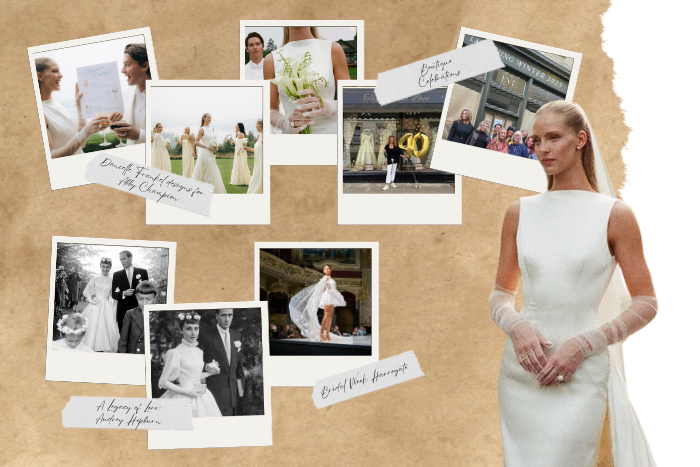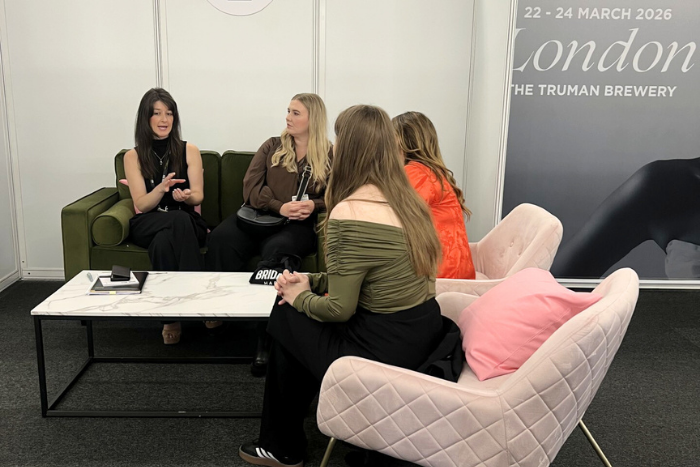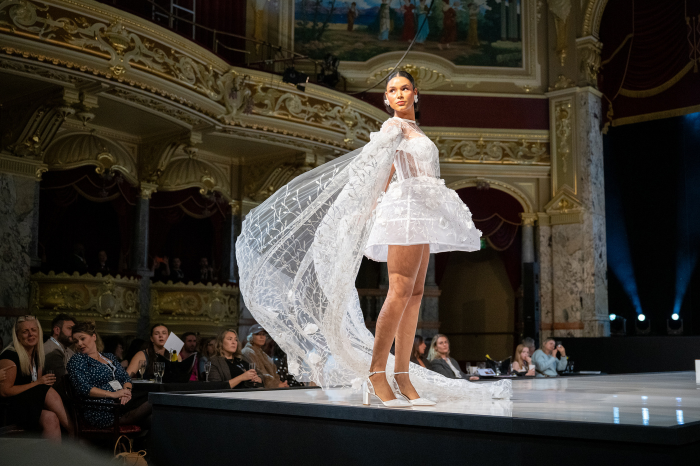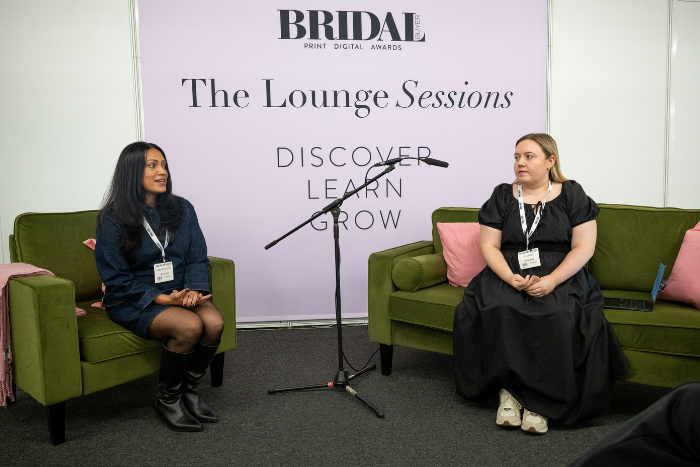Ask the Expert: Leann Marshall
In the latest Business Advice Clinic, boutique owners and alteration specialists posed the questions that matter most to running a successful bridal business.
Leann Marshall, owner of LeannMarieDesign and author of the blog All Gown & No Knickers, shared her expert insights on managing tricky alterations, setting the right pricing and maximising in-house alteration capacity. Her practical advice helps boutiques streamline operations, support brides and ensure every gown fits perfectly.
Asked by a boutique owner: “I refer brides to different alterations people. But what is the procedure if there are bad alterations or a bride has a terrible experience?”
The answer to this question is with the boutique owner. What do you think the procedure should be? And what help are you able to offer? Your response will depend on:
• What technical sewing ability you have yourself,
• What level of after-sales contact you maintain with your brides,
• How well you know, trust and respect your recommended alteration provider(s),
• How many alteration providers you have access to,
• What sort of bridal timelines you are catering for. Off-the-peg brides often have a different timeline capacity than made-to-order brides.
• How clearly you have stated your legal obligations (and where these end) during the sales process.
Ultimately, you want a bride to leave your boutique happy. And to ensure that the subsequent alterations process is also a happy one. But you cannot be responsible for the output of a third-party business i.e. an
alterations company. Therefore, my advice would be in relation to preventing problems in the first place. You can be responsible for who you recommend. So ensure that you complete your research before making referrals.
• Visit their premises. Look for a clean, organised and professional environment.
• Discuss their professional background and ask for prior employer references. Ask to see any relevant certifications.
• Speak to other boutique owners to see what is known about their reputation. Who else refers to that same alteration specialist?
• Look at their online presence. Read comments left by social media followers and if these comments
appear to be from recent brides, send them a message asking for feedback on their alterations experience.
Look at online reviews and ratings. Look for evidence of awards or nominations. Look at their website if
they have one and scrutinise photography. Do hemlines drape correctly? Are print or lace details correctly pattern-matched? Do bodices look well fitted….?
• Meet in person to discuss their pricing and how that is generated.
• Discuss their referral process and capacity.
• Ask them what their policy is, should a bride be unhappy with the outcome of their alterations.
At various times throughout the year, check in with your alteration’s provider. Check that all is well. Questions you could ask include: Are bookings running on schedule? Do they enjoying working with your brides? Is there anything else you can do to aid the referral process? Are there any brands or specific dresses from your boutique that are causing real alteration problems?
Likewise, follow up with your brides. Were they happy with their experience? This can help you to pre-empt certain problems and make changes for future brides. It’s also a good way to gather much welcomed positive feedback for your alteration provider too.
Asked by a seamstress: “How do I know that I am charging enough and charging right?”
This is a tough one to discuss hypothetically, because the magic answer is not the same for each business. To look at this more closely it does involve using specific figures from your own business and you may want to book somebody like myself to assist with this. But to start analysing your charging capacity you should consider these contributing factors:
• Your static overheads for the year, including insurances, machine servicing charges, website maintenance as well as bigger outlays such as premises costings.
• How many weeks per year you are willing to work.
• The number of gowns you altered during the last 8 month peak season and the last 4 month low season.
• The type of dresses and designers you typically see. Is there a pattern? This will depend on what kind of boutiques you take referrals from. Do you work with a lot of plus size constructed gowns? Do you work with a lot of beaded gowns? Do you work with a lot of large ball gowns?
• The average hours count per gown for alterations during the last financial year.
• The total number of staff team work-hours you have access to per week.
• Your staff wage rate.
• The annual total of any supplementary income generated from non-labour extras. For example, underwear or jewellery sales.
• Location and region. What do you your competitors charge (within a 1hr radius?) And how can you find out?
Asked by a boutique owner: “We offer in-house alterations but turn some of our brides away for their alterations because we don’t have enough availability to refit every dress that we sell. How can we alter more dresses?”
The answer to this will be different for each boutique as it depends on several factors, including:
The team- how many people are completing alterations and are these the same people that are also responsible for selling the gowns.
Sales targets- your required capacity for alterations will depend on the number of gowns sold. A sales process of 3 hours will average an alteration requirement of about 14-22hrs depending on what needs doing and the type of gown. The alterations team, as rule, will always need to be bigger than the sales team if altering 100% of sales in-house.
Location- are alterations and/or fitting hours limited by access to the boutique space or is there a separate area set up for this, with unlimited access 7 days p/w.
Employees vs self-employed freelancers – do you work with contracted employees which offer guaranteed staffing availability and set hours… or are your alterations conducted by an in-house self-employed freelancer who can effectively dictate their own work-flow, capacity and availability.
Wedding dates– do you find that your gown curation attracts brides from one season more than another… Or does your stock transition well across a range of wedding months? This will dictate whether you experience an alterations ‘bottle-neck’, since the alterations timeline will generally need to fall within three months of the brides wedding. If you were to analyse the number of weddings occurring per calendar month, and do this retrospectively across three years worth of sales, you may be able to identify a pattern of which brides you attract. If you seem to have 75% of sales attracting Spring March-May brides, for example, then increasing staffing capacity on alterations between January to April would help facilitate more bridal alterations ahead of the Spring weddings. This might mean moving towards more seasonal contracts. Or buying in an extra freelancer to assist the full-time team during that business quarter. You could also look to introduce more Autumn/Winter suitable gowns to help spread the timeline demand.
Stock curation- Certain types of design take longer to alter than others. When curating your stock, it is helpful to think about technical construction, in addition to the usual considerations such as price point and design aesthetic. You could involve your alterations specialist in the gown selection process to ensure that your stock range is balanced with dresses that vary from ‘quick-turn-arounds’ to more intensive jobs.
Labour intensive flags:
• Large circumferences, multiple layers, and the use of horsehair (crin) all require more hemming hours.
• Heavily embellished surfaces require pre-alterations removal and post-alterations embellishment.
• Heavily boned bodices take longer to adjust as bones often need removing temporarily or shortening and re-tabbing.
At your boutique you could book somebody like myself to do a technical construction assessment across your current gown stock. It can be helpful to use red/amber/green stickers to indicate high/moderate/low work
intensity and cost.
Written by Leann Marshall leannmariedesign@gmail.com
Owner of LeannMarieDesign








